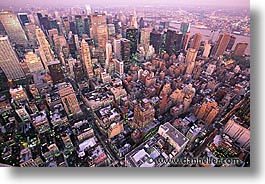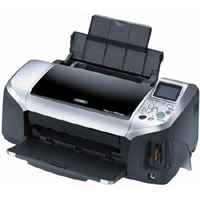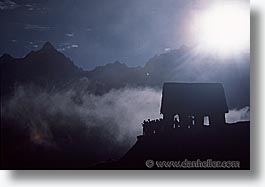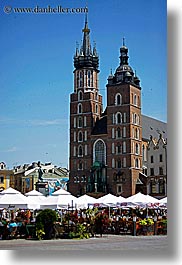|
Markers indicate locations for photos on this page.
Accuracy responsibility of Google Maps
Google Map Goes Here
If you see this text, the map is still loading (or there's an error). |
This chapter does not discuss printing methods, techniques, or other
technical information. That material is discussed in a plethora of
other books and websites. However, there are ways to optimize existing
production processes without changing the creative component, and that's
what this chapter is about.
For those that feel that the older methods of printing with negatives using chemical baths is the only way to truly make a respectable art form, I understand. I respect that. I also admire it. If that is your craft upon which you intend to base your business, don't let me or anyone else talk you out of it. But, let me be clear: it has to be your craft and art form. Mastering this art form is a time-consuming process that often takes years before you're making something truly unique and different than just making straight prints from your negatives. There mere use of a darkroom is not, in itself, respectable. Without the specific skills of this tool, the technique is no more artistic than sending a photo directly from a digital camera to a drug store photo lab.
If you want to sell prints online, that part doesn't change—it's only
the fulfillment process that changes. That is, there's nothing unique
about darkroom printing, except that you can't automate the production of
prints in high volume as you can with digital printing. The advantage to
digital, however, is that even though the fine-art aspect of the creative
process can be even more time-consuming and detailed as the darkroom
(due to the fact that you can get even more refined to the pixel level),
you only have to do this once. Upon completion, you can now mass-produce
prints as needed. (If the idea of "mass-production" is offensive to you,
then fine: don't mass-produce. Just because you can replicate your
digital images doesn't mean you have to, nor does it rob anything from
the artistic process or uniqueness.)
Printing from digital data sources is part of the process called digital imaging. This involves factors that include not just making a quality print, but doing so reliably, consistently, and repeatedly. When you add the business component, you also incorporate efficiency.
The two main mediums for digital printing are the inkjet, and "photo
paper." Other, less traditional methods include canvas, "Giclee" and
Iris prints (as well as many others), all of which use alternative papers
and inks, which are chosen more for creative license.
However, your limitation is more on the longevity of the prints, their sizes, and expectations from the buyer. For non-art items, such as consumer-based products like note cards, postcards and greeting cards, inkjet printing has also become a real niche art form because you can produce things not commonly found in gift shops or retail outlets. In these cases, it might be most cost-effective to go to a specialty card-maker to produce these. (For a discussion on this, see Selling Posters, Postcards and Calendars.) For those who are just making traditional prints that go from the digital media directly onto typical inkjet photo paper, the costs and quality of these prints vs. photo-paper prints present important considerations. Inks used in home-based printers are not as archival as manufacturers claim, and most independent studies show that only the most costly inks and papers hold their color tone and richness over a period of a few years if they are kept in a cool, dark place. Even then, their aesthetic cannot rival photographic paper, which not only looks better, but has already demonstrated its archival quality over the course of time. While the dynamic range of inks has shown to be impressive, a properly color-managed image can yield ever more impressive results on photo paper. If that weren't enough, business considerations may tilt the benefits even more towards photo paper too. Lastly, there's the expectation of the buyer. When high-end home photo printers were new, the uniqueness and novelty made it a selling factor for photographers who would advertise that their prints were made this way. However, as more consumers have purchased such devices themselves, and the cost and quality of home printers has broadened the market, the perception of prints made with home printers has tarnished, fairly or not. In any event, the perception of a true photo-paper based print has returned as the baseline product most photo buyers seek.
And then there are the costs: inkjet prints can escalate quickly.
Accounting for paper and (mostly) ink, the average cost of most home-based
prints runs about $.50 for a 4x6" print, whereas the price for the same
print at a most photo labs goes for about $.15 a print, which brings
us to...
In order to keep costs down, most of the super-low cost print suppliers have introduced (and hidden) the fact that they are now moving away from photo-paper printers, and instead, using a newer, low-cost/quality process that's even worse than home-based inkjet printers. These are like dye-transfer printers, and you see them in drug store kiosks with signs that say, "Prints in 5 minutes!"
Fortunately, the homework is simple: just make sure your prints are produced using a photo-paper based printer. And most corner drug stores use these (some along side the cheap 5-minute print kiosks). The digital photo printers that most corner photo labs and drug stores use include the Fuji Frontier and the AGFA d-lab series printers. For 99% of all fine-art printing needs, these printers are just fine. The paper is what matters most, and the papers these systems use is identical to those used by the exceedingly expensive high-end photo labs. The main limitations, however, are size and "color profile." On size, drug store printers usually max out and 8x12", and the color profiles are limited to sRGB. (I'll get into that later.)
Higher-end printers that are used in more professional photo labs include
the Cymbolics Lightjet 5000 (or the Lightjet 430, which supports bigger
paper sizes), and the Lambda. These systems can produce prints up to
60" wide; and because the paper is on rolls, there's no limit on the
length. What's more, the dynamic range of the machine itself yields a
broader range of colors on the paper—that is, they can use broader colors
than sRGB color profiles.
Most inkjet printers only require images to be around 200dpi before any lower resolution would degrade quality. In other words, if you printed an image at 700dpi, and another at 200dpi, you wouldn't be able to tell the difference. This is also true of the higher-end digital photo-paper printers. As discussed in DPI (Dots per Inch), every printing device is different in what its actual "DPI" rating is, but the true differentiator is where the machine renders not just accurate colors, but smooth enlargements. On some high-end printers, I've printed very large prints at 92dpi and found the results to be exceptional. That might not be the case for every image—some images are not as affected by lower-resolution as others. There's no rule here. Because the effects of DPI is an imprecise science, your attitude should be to print at the highest DPI you can, but don't require any single number. That is, don't reduce your image resolution unless you have to. The real point is, you can get better results from lower-resolution images than you've been lead to believe by other photographers. And this is where the real difference exists between these much more expensive, higher-end printers from the drug-stores. It's not the quality of the paper, or the printer—it's the ability to produce better prints from lower-resolution images. Fortunately, this is a self-selecting process anyway. Since the drug-store printers can only go up to 8x12 anyway, chances are that anything you want to print will already have plenty of resolution to make a fine-art print. It's only when you get to sizes of 13x20 and higher that your digital image's resolution begins to drop off. At this size, a typical 10 megapixel camera can produce a resolution such that a 13x20 print will be around 150-200dpi. And that's just fine for the higher-end printers; the resulting image will appear perfectly acceptable.
As a business matter, selling a 40x60 print to an office complex usually
translates to $1100 or more, so knowing how to print at these sizes
is worthwhile.
In my business, for small prints (8x12 and smaller), I go to my local
drug store, which is about two blocks away. I print onto photo paper,
pick up the prints in about an hour, and send them to my buyer.
For bigger prints that I sell on my website, I choose labs that let me
upload my photos to their site and print by submitting an order form. I
never want to have to leave my house, or send a disk, or even talk to a
customer-service person to place an order. Assuming the vendor has an
automated site for handling my printing needs, the other main aspects of
a good service provider are: turn-around time and customer service
if something goes wrong. You often won't learn of the latter until
there is a problem, so don't just take statements at face value when
things go right.
The most important aspect to running a photo business that sells prints is whether you're making a product that's worth the money you're selling it for. Once you do that, your success in business is then governed by the choices you make in materials, processes, and vendors. Your job is to figure out how to make your product without reducing quality, while managing time (which translates to efficiencies), and costs. (This chapter does not discuss framing, but the subject is covered in Selling Photography Prints.)
Click to recommend this page: |
|





